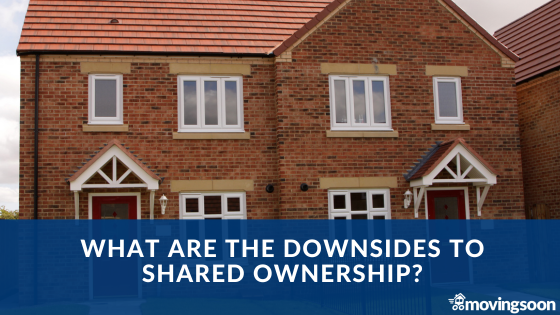The shared ownership scheme is typically aimed at first time buyers. It is also used by those who are looking to get back on the property ladder as well as downsizers. Do your research to see what the downside to could be for you.
Table of Contents
To recap, shared ownership houses are a type of home ownership arrangement where a person buys a portion of a property and rents the remaining portion. This can be from a housing association or other entity. When we say other entities it’s because there are other for profit and not-for-profit providers who offer shared ownership houses now.
The part buy part rent model does have advantages, such as providing an opportunity to enter the property market with a lower initial cost. There are also some potential downsides to be aware of.
To be clear you need to do your own research to see if it works for you or not.
Shared owners have limited control
As a shared owner, you may have limited control over certain aspects of the property. Such as making modifications or alterations. However, this may vary depending on the housing provider. So your property may be subject to certain restrictions imposed by the housing association or other entity.
Ongoing shared ownership costs
While shared ownership can reduce the upfront cost of buying a home, you will still be responsible for ongoing costs. The rent on the portion of the property that you don’t own will go to the housing association or another entity. You need to also bear in mind there will be service charges and maintenance costs. These additional costs can add up and affect your overall affordability so it is important that you cost these in when doing your research.
Difficulty in selling a shared ownership property
Some people struggle to sell shared ownership. Selling a shared ownership property may be more complicated compared to selling a property that you fully own. The process may involve finding a suitable buyer who is eligible for shared ownership. This includes dealing with any restrictions or regulations imposed by the housing association or other entity.
Lack of equity growth for shared ownership
The amount of equity you can build in a shared ownership property may be limited. Your ownership is typically limited to a percentage of the property. This means that if the property value increases, your equity growth may be proportionally lower compared to owning a property outright. That said, if the market turned then potentially you may not lose as much if you owned your home outright. It is important to state that like outright sale, shared ownership properties can also rise or fall in value.
Shared ownership eligibility and restrictions
Shared ownership schemes may have eligibility criteria, such as income limits or residency requirements, which could limit who can by these properties. They will depend on the criteria set by the housing association or other housing provider offering the shared ownership scheme you are interested in. Additionally, there may be restrictions on subletting or other limitations on your ability to use the property as you wish.
Get the right advice to see if this part buy part rent option works for you
It’s important to thoroughly understand the terms and conditions of any shared ownership arrangement and consider the potential downsides before entering into such an agreement. Consulting with a qualified financial or legal professional can help you make an informed decision based on your individual circumstances. Take a look at our shared ownership calculator to see what you can afford.
Shared Ownership: Key Topics
- Are shared ownership houses leasehold or freehold?
- What questions should you ask when viewing a shared ownership property?
- Is shared ownership right for you?
- What does shared ownership service charge cover?
- What are solicitors fees for selling shared ownership property?
- Buying or selling shared ownership what are the costs?
- Shared ownership vs renting what will you do?
- How does shared ownership work when you sell?
- Is shared ownership only for first time buyers?
- How does shared ownership staircasing work?


